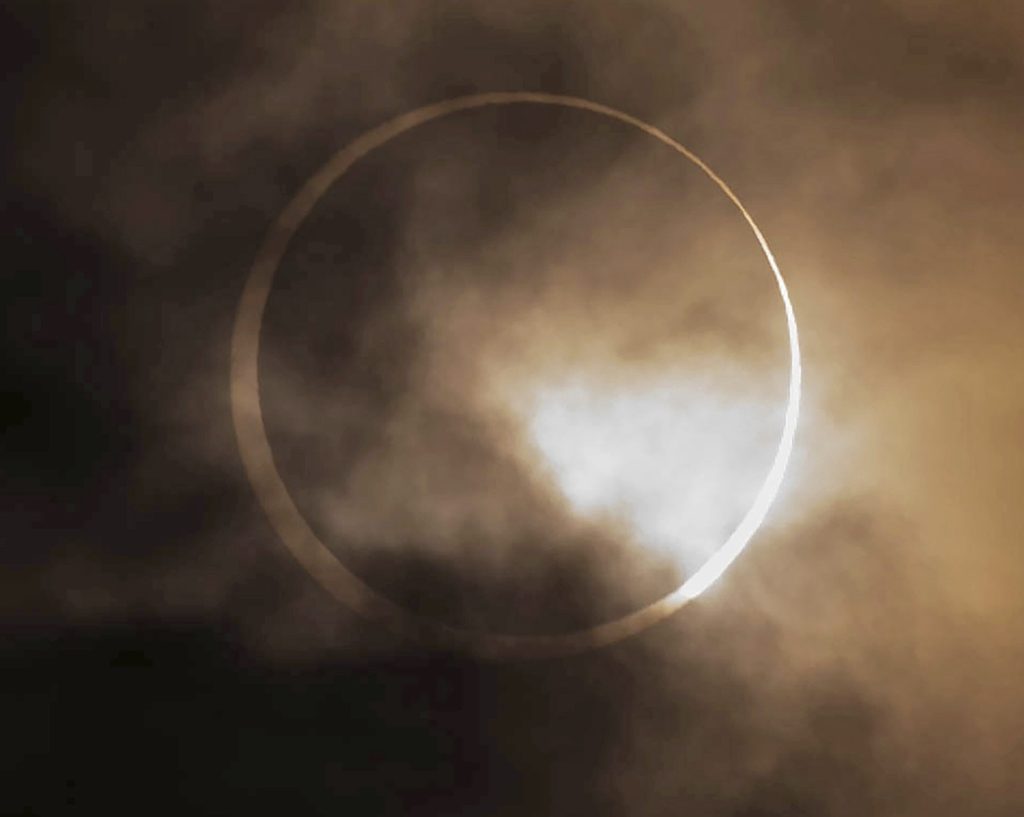An “annular solar eclipse,” often known as a “ring of fire” eclipse, was visible on Saturday morning in the United States. Unlike a total solar eclipse, a partial eclipse of the sun by the moon creates a spectacular bright ring around its edge. This extremely uncommon occurrence could only be seen in a short stretch across the US.
The eclipse commenced in Oregon and shifted on to California, Arizona, and Colorado before passing into Utah, New Mexico, and Texas. It then traveled through Central and South America in a southerly direction.
Hot air balloons took off in large numbers in Albuquerque, New Mexico, just after sunrise, and then the eclipse happened a few hours later.
NASA advised eclipse viewers not to see the event without taking the necessary safety measures, stating that they would need to utilize specialized solar filters or an indirect viewing technique to view it securely.
The eclipse was a once-in-a-lifetime experience for many people.
Kirby James, who witnessed the eclipse in Utah, said, “It’s the moment, especially when the ring of fire came on, you realized you were having a lifetime experience.”
How the eclipse works?
When the moon crosses in front of the sun but is too far away to totally block it out, an annular solar eclipse happens. As a result, the moon’s rim is surrounded by a dazzling ring of sunshine.
Total solar eclipses, which happen when the moon fully obscures the sun, are more often than annular solar eclipses.
Where could people see the eclipse?
A confined area of the US, starting in Oregon and finishing in Colorado, might see the eclipse. Additionally, regions of Central and South America could see it.
How long did the eclipse last?
At any given place, the eclipse lasts up to three hours from the time the moon begins to move in front of the sun until it returns to normal.
The ring of fire portion will last between three and five minutes, depending on where it is being viewed.
How to safely view a solar eclipse?
It is never advised to look straight at the sun, especially during a total eclipse. You must use sophisticated sun filters or indirect viewing methods to safely see a solar eclipse.
Specialized sun filters can be purchased from reliable suppliers. Utilizing a solar telescope or transferring the eclipse’s image onto a screen are examples of indirect viewing techniques.

